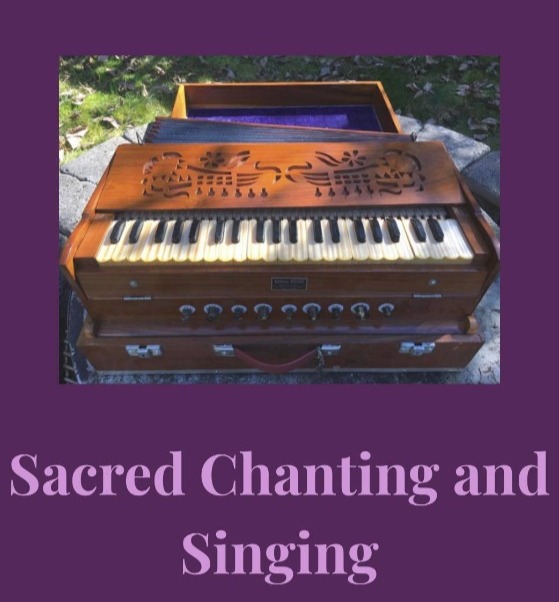Devotional Kirtan
Diane Doughman is a very close friend of Jeremy Anacker of Affiinty Transformation for over 18 years. She owned and ran Mimosa Bookstore for many years and he had the great fortune of helping her store to serve the Madison area's alternative community.
Diane was often a profound awareness consultant for me as he taught classes in her Bookstore's resource center. As Diane is a lifelong devotional soul she was very happy to share some details about Kirtan and Hindu Philosophy. Her many travels to India also helps to inform the following article.
See Below
Kirtan chanting is a call and response form of devotional song that has long been used in Hinduism. Its simplicity is that there is no need for song books or musical script. It can be just a leader and the other participants, but often simple musical instruments like the harmonium, small cymbals, rattles or drums add to the experience. In Hindu Kirtan, the chants are in praise of a variety of deities and/or avatars. However, Western participants may not be familiar with Hindu philosophy. Hinduism is known as a henotheistic religion. Like in Monotheism, they believe that there is only One Supreme Creator. But they also believe that the One Supreme Godhead can manifest in many forms. So, Hinduism has many manifest deities that are worshipped. It also has a number of Avatars who were divine figures incarnated as humans, similar to Jesus or Buddha. Basically, Henotheism means one God, many forms.
If a person was raised in a Judaic, Christian or Islamic tradition they were likely taught that worshipping idols (i.e. – statues of gods) was wrong. While it is true that most modern religions have a One God concept, it is important to realize that Hinduism is a very ancient religious tradition that came into being before humans had invented writing. Our newer religions rely on written scripture to convey their concepts about divinity. But, a religion developed before there was writing had to convey its beliefs through images and artistic representation. And that is exactly what the various deities of Hinduism did. Each deity depicted various attributes, qualities and powers of the Supreme Godhead. Their stories were passed down orally from one generation to the next as a way to teach beliefs.
If you understand this, then Kirtan becomes an act of praise to that which is the One Supreme Creator of All things. Furthermore, Sanskrit, which is the spiritual language of Hinduism, uses the power of sound to uplift, bless and manifest intentions. The very sound of the chanting, even if one doesn’t understand the meaning, will still have energetic effects that bless the participants. The same is true for the playing of sacred instruments like singing bowls, gongs, bells, tuned chimes, drums, etc. The vibrations of such instruments can open up spiritual portals, open and clear Chakra power centers in the human body and can aid humans in finding connection with the vibrations of the divine realms. Sound is often used to help induce psychic states.
We are holding space for you and for the sacred use of your own voice.
Read article on the benefits in Sacred Chanting and Singing. See also Sacred Chanting and Singing event.






